 Facebook
Facebook
 X
X
 Instagram
Instagram
 TikTok
TikTok
 Youtube
Youtube
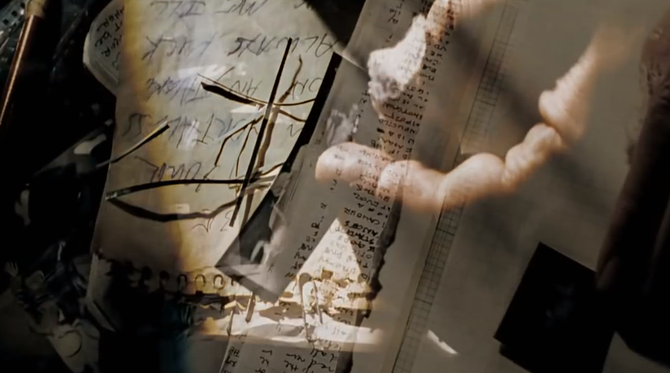
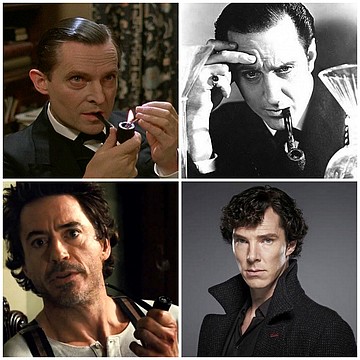
Remember 2011’s Sherlock Holmes: A Game of Shadows? Probably not; it wasn’t that good, and it mostly served as a reminder that Robert Downey Jr.’s wisecracking, arrogant, masterful Sherlock Holmes was not all that different from Robert Downey Jr.’s wisecracking, arrogant, masterful Tony Stark in Iron Man. Besides, we’ve had the rise of Sherlock since then: Benedict Cumberbatch taking back to the role for Merrie England, and bringing it into the modern age, to boot. I did enjoy Jude Law’s high-dudgeon take on Watson, but Downey’s detective still seems bound for the same dusty shelf that holds Jeremy Brett and Basil Rathbone, to name just two of the better Holmeses in history.
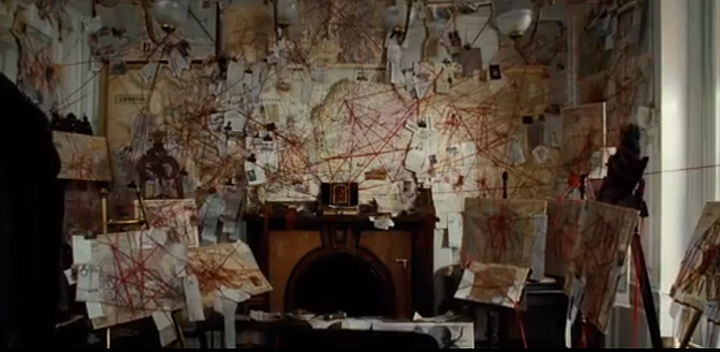
But I digress (largely because it’s a slow news week, unless you want to celebrate the opening of X-Men: Days of Future Past by rehashing the sexual assault allegations against director Bryan Singer, which I don’t). So: back to Game of Shadows. At one point, Watson visits Holmes at home and finds the walls of his study simply covered with newspaper clippings, photographs, handwritten letters, maps — all sorts of papery informational bits. In proper cinematic fashion, Holmes has manifested his mental connections between the bits in a visible way: by stringing bits of red string from one to another to another and back again. Why, it’s a literal web of conspiracy — ho ho! And just in case you missed it, Watson actually calls it just that.
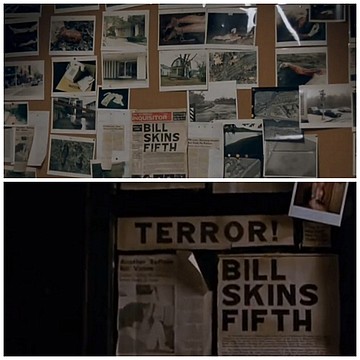
The scene was a cute riff on the old standby of the police bulletin board, with its orderly array of photographs and names. Holmes, the one-man police force — the man with so much information in his head that he needs to get it out and see it spread before him, just so he can sort it out. What a treat to see how all those thoughts link together and converge — or at least, to see that they have done so.
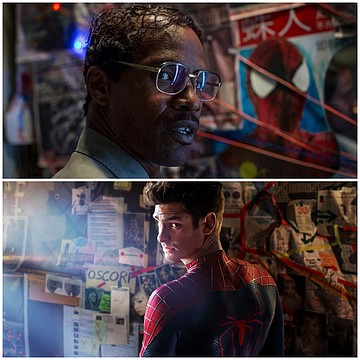
Speaking of that old police bulletin board: it was used to good effect at the opening of 1991’s Silence of the Lambs. FBI trainee Clarice Starling is called into the office of Jack Crawford, the man she wants to work for someday. He’s not there when she shows up, so she looks around the room. And then she stops, and the camera moves in on her frozen face. She’s seen the board: photo after photo of Buffalo Bill’s skinned victims — young women much like herself. And there at the bottom, a newspaper’s front page, with its chilling headline: BILL SKINS FIFTH. Equally chilling: near the film’s end, we learn that Bill has a bulletin board of his own, one that features the very same newspaper headline. Hey media man: the same horror that moves copies also makes a nice keepsake!
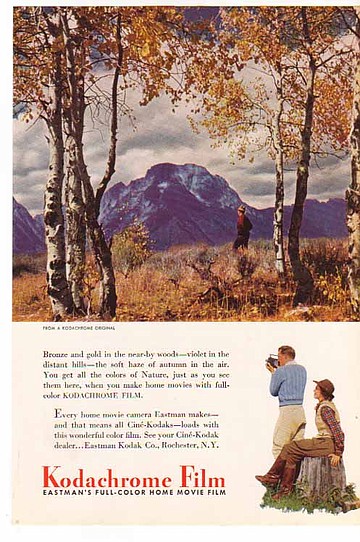
But 1991 was more than 20 years ago. Plenty of time for cliché to set in. You know how bad it’s gotten? This bad: they used the same good-guy/bad-guy parallel collages in The Amazing Spider-Man 2, a movie that poured every drop of its creative juices into visual effects. (Early on, Spider-Man quips, “You can call me amazing...just don’t call me late for dinner,” which is pretty much the first-draft equivalent of INSERT WITTICISM HERE LATER.) Anonymous schizo genius Max Dillon gets noticed by Spidey, and so develops a creepy fixation on the wall-crawler. And what’s a good fixation without a wall collage, complete with radiating red lines? Later in the film, Spider-Man himself starts getting all thinky; naturally, he too makes a wall collage, complete with radiating red lines. Collaging: it’s what all the cool kids are into.
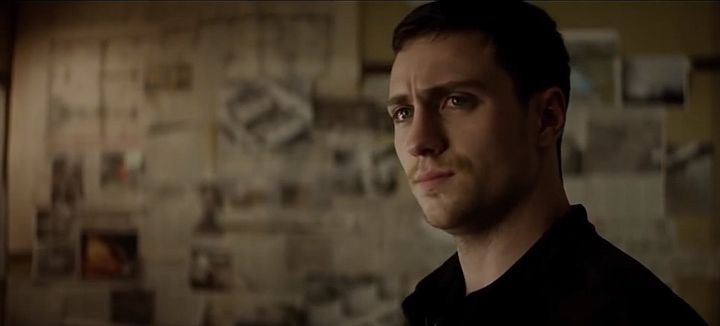
Except it’s not. I know it’s hard to dramatize Google searches and feverish keyboard pounding, but collages aren’t how people arrange visual information any more. They just aren’t. Various tablets have pundits predicting the obsolescence of the laptop computer, and you movie guys are still sticking photos and bits of newspapers to walls? In stories not set 25 years ago? (Hilariously, Spider-Man was produced by Sony — a company that should know a few things about the digital age. How on earth did they retain enough shame to avoid having Peter Parker explore the mysteries of his past on his sleek, powerful Xperia Z2 tablet?) It’s almost as bad as watching him leaf through photos of his beloved Gwen Stacy — printed photos. That must have been confusing for the target demographic.
Still, at least ol’ Pete was looking at those photos in his room, and not, say, in the belly of an airplane just before being dropped into the sky above San Francisco. Hi there, Godzilla! You didn’t think we’d forget about you, did you? That’s right: hero soldier Ford, just before skydiving over Monster Fight Ground Zero, takes a moment to gaze at a wrinkled photograph of his family. A sly homage to the fact that the original Godzilla came out in the days before soldiers had smartphones? Or just the same sort of epic laziness that gives us brilliant nuclear scientist Bryan Cranston, tracking echolocation data through his computer while surrounded by — wait for it — an apartment-sized collage of newspaper clippings?
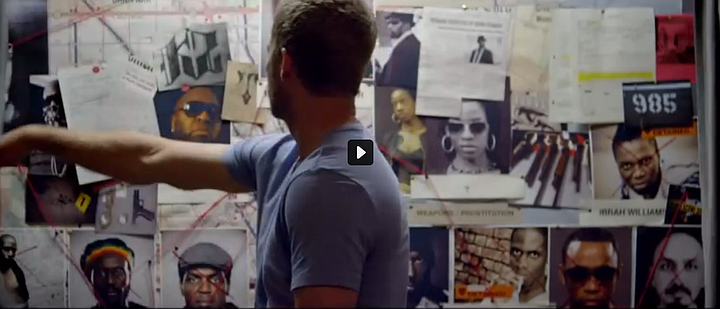
Godzilla trotted out its collage on May 16. Spider-Man on May 2. Brick Mansions beat ’em both to the punch by opening on April 25. At least supercop Paul Walker kept his version tastefully hidden behind a curtain; only he was savvy enough to be ashamed of his cliche.



Remember 2011’s Sherlock Holmes: A Game of Shadows? Probably not; it wasn’t that good, and it mostly served as a reminder that Robert Downey Jr.’s wisecracking, arrogant, masterful Sherlock Holmes was not all that different from Robert Downey Jr.’s wisecracking, arrogant, masterful Tony Stark in Iron Man. Besides, we’ve had the rise of Sherlock since then: Benedict Cumberbatch taking back to the role for Merrie England, and bringing it into the modern age, to boot. I did enjoy Jude Law’s high-dudgeon take on Watson, but Downey’s detective still seems bound for the same dusty shelf that holds Jeremy Brett and Basil Rathbone, to name just two of the better Holmeses in history.

But I digress (largely because it’s a slow news week, unless you want to celebrate the opening of X-Men: Days of Future Past by rehashing the sexual assault allegations against director Bryan Singer, which I don’t). So: back to Game of Shadows. At one point, Watson visits Holmes at home and finds the walls of his study simply covered with newspaper clippings, photographs, handwritten letters, maps — all sorts of papery informational bits. In proper cinematic fashion, Holmes has manifested his mental connections between the bits in a visible way: by stringing bits of red string from one to another to another and back again. Why, it’s a literal web of conspiracy — ho ho! And just in case you missed it, Watson actually calls it just that.

The scene was a cute riff on the old standby of the police bulletin board, with its orderly array of photographs and names. Holmes, the one-man police force — the man with so much information in his head that he needs to get it out and see it spread before him, just so he can sort it out. What a treat to see how all those thoughts link together and converge — or at least, to see that they have done so.

Speaking of that old police bulletin board: it was used to good effect at the opening of 1991’s Silence of the Lambs. FBI trainee Clarice Starling is called into the office of Jack Crawford, the man she wants to work for someday. He’s not there when she shows up, so she looks around the room. And then she stops, and the camera moves in on her frozen face. She’s seen the board: photo after photo of Buffalo Bill’s skinned victims — young women much like herself. And there at the bottom, a newspaper’s front page, with its chilling headline: BILL SKINS FIFTH. Equally chilling: near the film’s end, we learn that Bill has a bulletin board of his own, one that features the very same newspaper headline. Hey media man: the same horror that moves copies also makes a nice keepsake!

But 1991 was more than 20 years ago. Plenty of time for cliché to set in. You know how bad it’s gotten? This bad: they used the same good-guy/bad-guy parallel collages in The Amazing Spider-Man 2, a movie that poured every drop of its creative juices into visual effects. (Early on, Spider-Man quips, “You can call me amazing...just don’t call me late for dinner,” which is pretty much the first-draft equivalent of INSERT WITTICISM HERE LATER.) Anonymous schizo genius Max Dillon gets noticed by Spidey, and so develops a creepy fixation on the wall-crawler. And what’s a good fixation without a wall collage, complete with radiating red lines? Later in the film, Spider-Man himself starts getting all thinky; naturally, he too makes a wall collage, complete with radiating red lines. Collaging: it’s what all the cool kids are into.

Except it’s not. I know it’s hard to dramatize Google searches and feverish keyboard pounding, but collages aren’t how people arrange visual information any more. They just aren’t. Various tablets have pundits predicting the obsolescence of the laptop computer, and you movie guys are still sticking photos and bits of newspapers to walls? In stories not set 25 years ago? (Hilariously, Spider-Man was produced by Sony — a company that should know a few things about the digital age. How on earth did they retain enough shame to avoid having Peter Parker explore the mysteries of his past on his sleek, powerful Xperia Z2 tablet?) It’s almost as bad as watching him leaf through photos of his beloved Gwen Stacy — printed photos. That must have been confusing for the target demographic.
Still, at least ol’ Pete was looking at those photos in his room, and not, say, in the belly of an airplane just before being dropped into the sky above San Francisco. Hi there, Godzilla! You didn’t think we’d forget about you, did you? That’s right: hero soldier Ford, just before skydiving over Monster Fight Ground Zero, takes a moment to gaze at a wrinkled photograph of his family. A sly homage to the fact that the original Godzilla came out in the days before soldiers had smartphones? Or just the same sort of epic laziness that gives us brilliant nuclear scientist Bryan Cranston, tracking echolocation data through his computer while surrounded by — wait for it — an apartment-sized collage of newspaper clippings?

Godzilla trotted out its collage on May 16. Spider-Man on May 2. Brick Mansions beat ’em both to the punch by opening on April 25. At least supercop Paul Walker kept his version tastefully hidden behind a curtain; only he was savvy enough to be ashamed of his cliche.
Comments